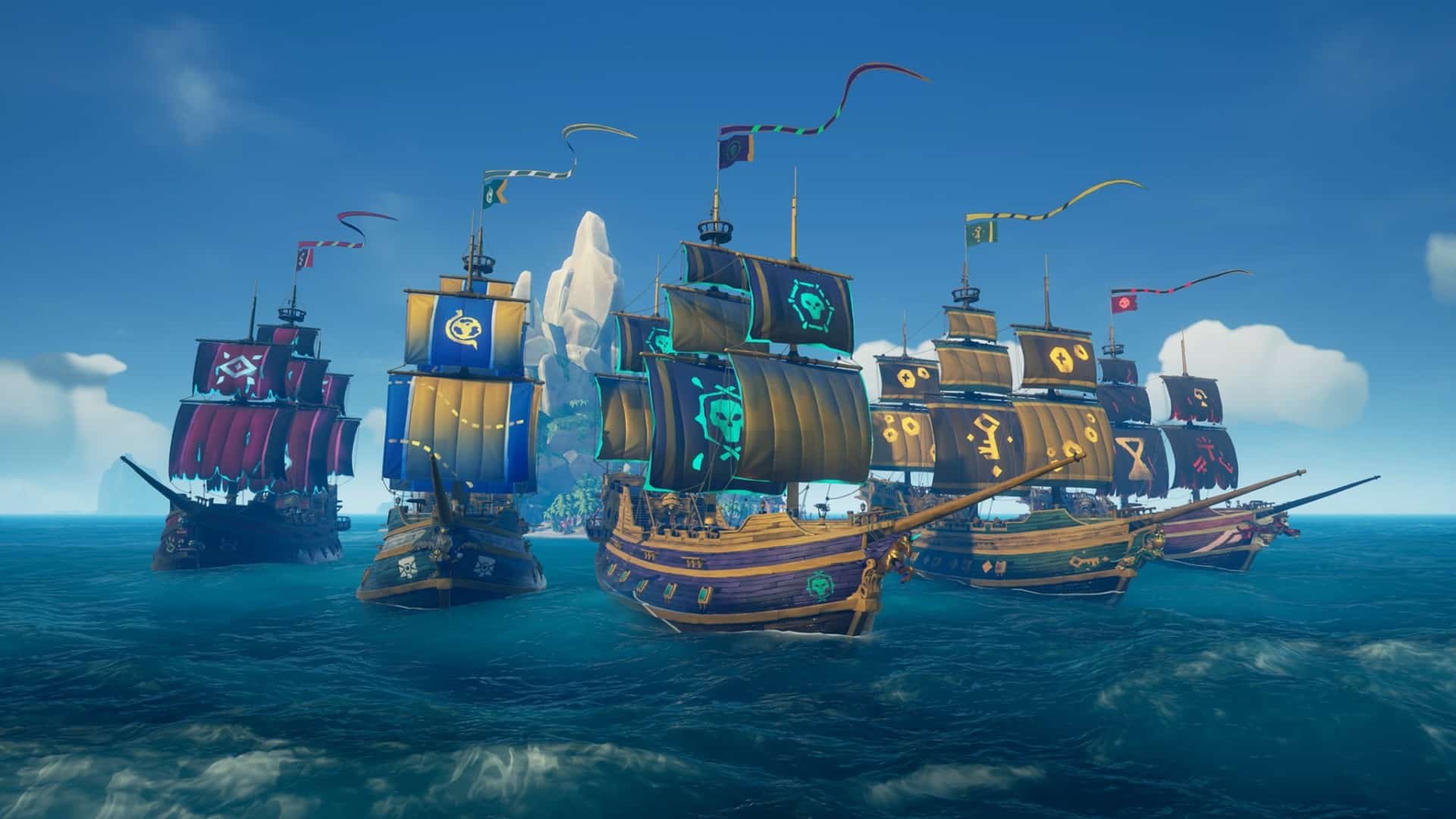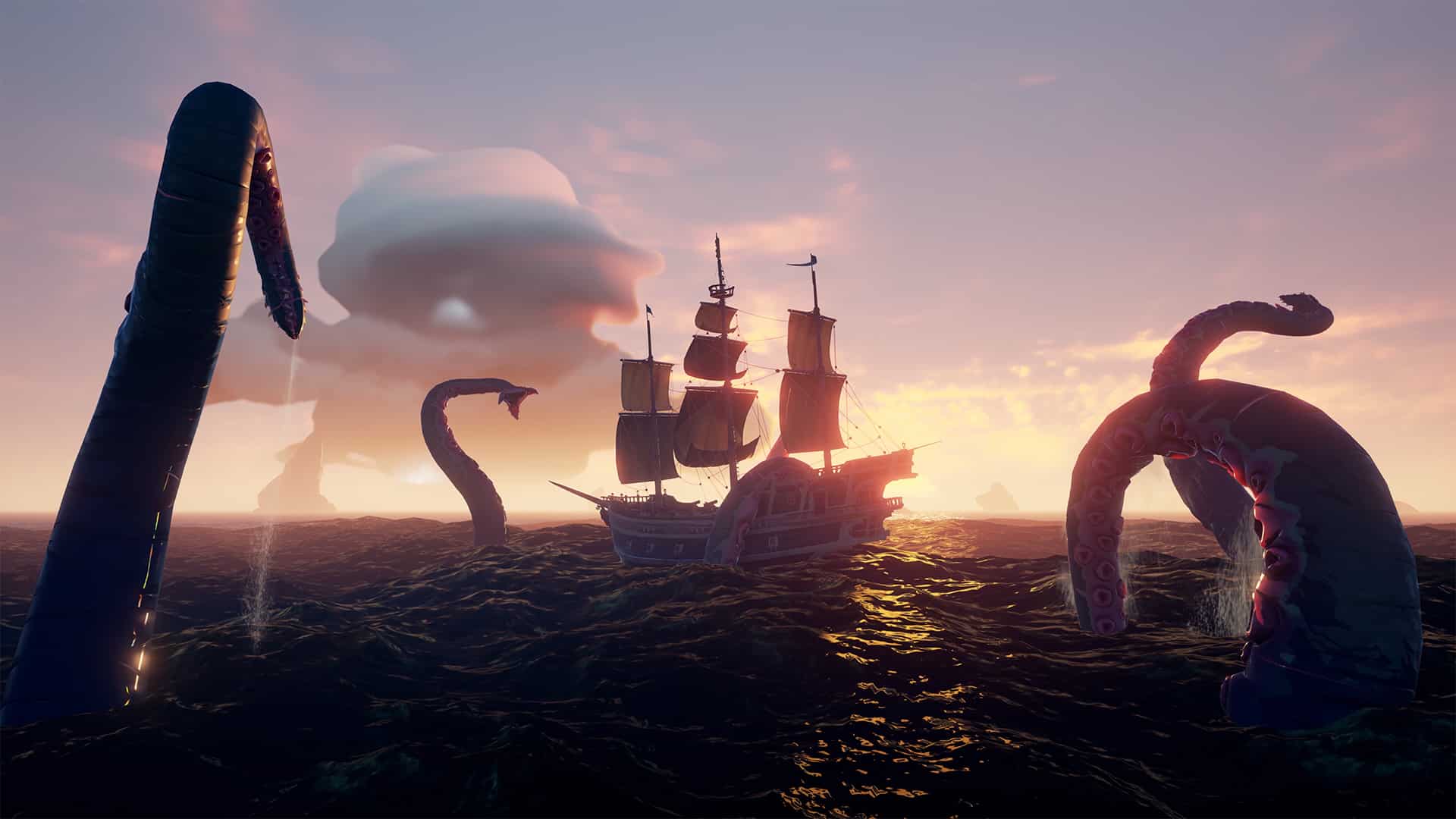It’s easy to lose a few friends on the voyage through life. Just before leaving college, I had a falling out with a friend whom I’ll refer to as John, and it left the relationship thoroughly wounded. We went from lifelong friends to not speaking for months. Two years went by as we only occasionally reconnected for a chat – until we ventured out into Sea of Thieves. Peering through a thick storm, narrowly outpacing a giant sea creature hunting our boat full of gold, I knew I would never lose this friendship again, not because we were successful, but because we ran the tightest ship the seas had ever seen. Building a vessel as fine as diamond took time and pressure though.
The basics of Sea of Thieves are mapped out from the get-go; you’re a pirate who does pirate-y things. You’re told to manage your sails, and your cannons are clearly presented. Ships can be damaged and then repaired. However, many aspects, such as navigation, speed control, and what you’re actually supposed to do, are not as plainly spelled out.
Our first trip out into Sea of Thieves was calm but complicated thanks to how it introduces players to the gameplay. Grasping the game’s fundamentals is simple enough, but getting anything significant done takes more than a comprehensive understanding of the ship – it demands efficiency. We were drifting on the waters, taking nearly an hour to complete a single mission. “What does this do?” and “What are we supposed to be doing?” were two questions regularly asked, each often met with, “I have no idea.”
What were we doing? Working out Sea of Thieves without much instruction is likely hard enough even for a pair who had never argued, so for two friends trying to fumble through the occasionally awkward exchange, I think we felt like this particular game might not be the best pick. Confused by each task assigned, John and I took a break after only a single trip.

Nonetheless, we joined for another attempt to find success around a week later, Sea of Thieves’ powerful art style pulling us back out to sea. This time though, something clicked and kept us hungry for more adventure.
John burst out with excitement the first time we spotted an island that we had been looking for. When he did, I ran above deck, looked out to sea, dropped our sails, and raised anchor. “North,” he directed while looking at the map from below deck. I hopped on our ship’s wheel and began to turn.
It turned out that, whether you’re aiming to mend a friendship or a video game ship, communication is the answer.
Sea of Thieves is devious in its desire to promote communication between crewmates. I can only imagine how many players started the game, only to never give it another shot when they realized that there was no hand-holding mini-map guiding their every step. The sea is as daunting as it is majestic, so it’s easy to start the game and never get much farther than the island you started on. For me and John, though, the game’s aggressive tendency to push for connection is exactly what we needed. We had been talking for the past few years, but we weren’t really talking. Sea of Thieves had us barreling through potentially awkward conversations with ease, and soon, our conversations were taking us through thick and thin on gaming’s most dangerous ocean.
Then we discovered sea shanties.
Rare gives every player a few instruments in Sea of Thieves: a concertina, drum, banjo, and hurdy-gurdy. John would normally play one of the many predetermined shanties to accompany us on our various journeys, providing background music as we’d joke and reminisce. Playing one instrument is good fun, so you can only imagine our surprise when we realized that playing alongside another player with a different instrument allows you to instantly join the same song. Suddenly, we weren’t just friends adrift at sea — we were a determined band of explorers and musicians alike.

When Sea of Thieves is done encouraging thoughtful communication, it allows you to coast along the waves and just enjoy the view. It takes time to travel, and it’s up to you and your crew to occupy that time. We went from only exchanging the occasional text, to slowly tackling voyages, to singing sea shanties from Assassin’s Creed IV: Black Flag, simply thanks to this space left for players to fill. Sea of Thieves didn’t just mend our friendship – it made it better than ever. The bond the game bolsters between friends feels intentional without being heavy-handed, a terrific feat on Rare’s part.
One day, our shanties came to a stark halt as the skies darkened and it began to rain. We took to the back of the ship to see one thing splitting the ocean’s violent waves in two: a ship-sized dorsal fin. The moment left us in awe, but mostly, we were terrified at what it could portend. Losing your ship means losing everything on board, which, in our case, was more loot than we had ever carried. Thus, we pulled ourselves together. Without skipping a beat, John grabbed the wheel, while I manned the cannons.
Our ship should have been pulled to the bottom of the ocean, but it wasn’t. Though every voyage poses its own threats and challenges, Sea of Thieves had given John and me the tools to ensure we never felt threatened again — and it can do the same for you, too. Rare has created a world that demands companionship as much as it thrives on communication, laying the foundation for settings that can shape lifelong friends. You can go through the game on your own, sure, but without a friend, it’s a bit harder to see where you’re going. Whether you’ve got a crew ready to head out with or you’re willing to join up with someone new, Sea of Thieves is one of the best places to experience how video games can be an effective social tool. It gave me a friend and brother back, so I know it can do something just as profound for you.






Published: Jan 24, 2021 04:50 pm